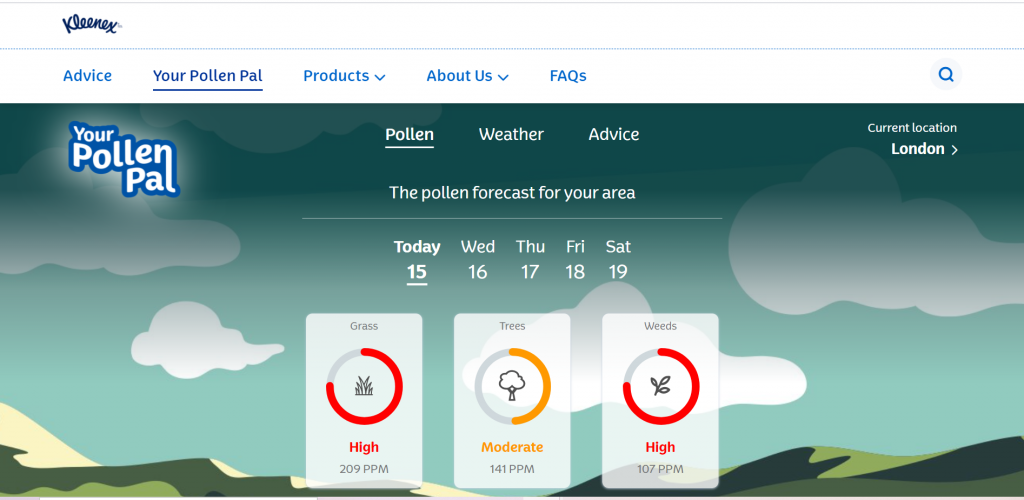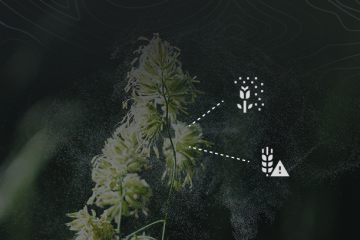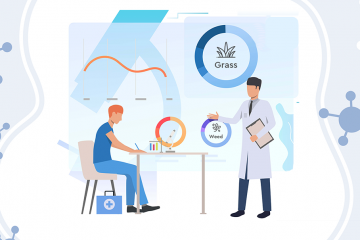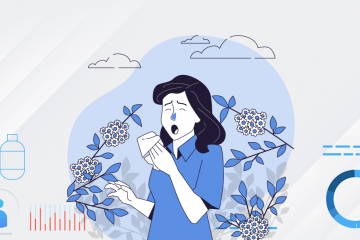The latest polls report that more than 25 percent of the world’s population suffers from severe pollen allergies. While the luckier few may only have to endure a mildly irritating, running nose, others are left exhausted due to severe allergies. Pollen’s potential to impact our quality of life is undeniably significant.
Pollen, a fine powder-like substance produced by plants as a part of their reproductive process, is misidentified in our body as a threat, resulting in allergic reactions. While its abundance peaks in spring and summer, plants release pollen throughout the year – relaying bad news for those with higher sensitivities.
Finding an effective treatment to cure seasonal allergies is not an easy task. However, developments in the field of pollen tracking have been on the rise. A pioneer in this field is Ambee. Its pollen insights help patients determine the type of pollen and pollen count and allow doctors to understand its setting and history. Knowing when pollen levels are rising and what type of pollen you’re up against could prove to be a game-changer in managing allergies for both the patient and the healthcare professional.
A Global Health Problem
Unfortunately, Pollen allergies are becoming a growing problem. As global temperatures rise, pollen released by plants increases. Some scientists believe the amount of pollen released could go up by 60 percent annually.
A patient’s likelihood of developing allergies depends on the place they grew up in. Those in urban areas are more likely to suffer from allergies and illnesses like hay fever as they get older. Any family history of allergies is said to maximize the risk. The associated expenditure is already massive – just hay fever generates a global cost of $5.3 billion every year. Alongside the effects it has on quality of life, the cost of hay fever is massive.
Finding Pollen Before It Finds You
As the healthcare sector expands to numerous avenues, integrating pollen updates and monitoring the variation in pollen count is becoming critically necessary for the treatment process. With accuracy down to multiple pollen species, environmental intelligence companies provide insights to patients, helping them tackle allergies and illnesses head-on.
With real-time pollen updates in place, healthcare providers, professionals and patients can track and compare when their allergies spike. Real-time tracking helps the user review pollen trends over a period. Higher counts of pollen do not necessarily mean the occurrence of illnesses; it also depends on the type of pollen present in the region.
Preparedness is essential before encountering pollen outside. It can reduce the chances of suffering from allergies such as hay fever, COPD, and other respiratory diseases. Pollen trackers can alert users when pollen counts are rising or when the specific type of pollen they are allergic to increases. They can then take any necessary steps to protect themselves. Kimberly Clark Corporation (KCC) offers its customers a user-friendly portal on their anti-viral facial tissue website. Powered by Ambee, Kleenex’s PollenPal works to disseminate pollen count and help patients make informed decisions. With granularity down to various pollen species, the data presented by KCC to its customer increases its customer engagement rates and helps patients get personalized instructions to brace themselves against upcoming allergy seasons.

Pollen trackers account for other environmental factors that impact allergies, such as temperature, wind, and humidity. Windy days can move pollen hundreds of miles across the globe. Dry, warm, and windy conditions typically result in the highest pollen counts. Rain effectively moves pollen away, clearing the air. Air quality is also an essential factor measured, as polluted air traps pollen particles and heat. These factors worsen allergies.
Tailor Your Treatment to You
The best way to prevent a reaction to pollen is to avoid it. However, it isn’t completely practical. That said, people can use pollen data to pinpoint allergy triggers and prevent them effectively. Ideally, people should start taking medication to tackle any pollen sensitivities before they’ve felt the effects of pollen-induced allergies themselves. Allowing it to build up in their system means that they’re safe from it when they encounter a pollen trigger. Real-time, accurate and detailed pollen reports can alert users of a new wave of pollen, allowing some time to start taking medication before feeling ill. The legacy company, Bayer, has adopted pollen intelligence into their marketing campaigns for Bayer’s Claritin in the UK market. Ambee’s Pollen data, in collaboration with Bayer’s directory, tailor marketing campaigns to their customers. Based on the pollen insights, customers can start taking medication before the allergies kick in in that specific region.

Medication isn’t everything, and there are some lifestyle changes you can make to protect yourself from pollen. During peak pollen seasons, avoid going outside, and if you do, be sure to shower when you get inside. Pollen can stick to your clothes and in your hair, triggering your allergies all day!
Find Better Pollen Allergy Treatment Options
Pollen allergies are extremely disruptive to people’s daily lives. More than 15 million clinic visits, 3.5 million days of missed work, and $24.8 billion in direct costs are incurred annually due to allergic rhinitis in the United States alone. Until now, avoiding allergens and staying protected was the primary clinical recommendation. However, technological innovations combined with the power of environmental intelligence are offering broadly effective interventions.
These new-age solutions to treat allergies vary from environmental data models for efficient treatment to antihistamines, sprays, drugs, and eyedrops. AI and ML models installed into the users’ mobile phones via a research platform will track the body’s vitals through wearables and determine allergy symptoms. Treatment methods are undergoing reinventions with the use of multi-dimensional and patient-centric forms of data in predictive models. R&D departments of legacy pharmaceutical companies work in tandem with intelligence start-ups like Ambee to develop an effective cure in all treatment methods. From smart inhalers to intelligent mobile platforms, from nasal sprays to anti-viral tissues, endless products to help you tackle allergies are available.
Summary
Staying updated with the pollen count in our surroundings can make the difference between a successful and failed pollen allergy treatment. Users can identify what type of pollen triggers them and when it’s nearby using pollen data. It allows the patients to start medical treatments at the correct time to prevent any more suffering.
Prescriptions for most pollen-sensitive people contain the same tool kit to tackle their ailment – antihistamines, nasal sprays, and eyedrops. However, every sufferer is different. Monitoring pollen can give you the personalized treatment needed to keep allergies at bay.
Healthcare companies can also use data from pollen data providers to improve their medication and treatment options. The study of allergens is a young field, and gaining valuable insight from real people could open the door to more successful treatments. Data could help develop a nasal spray specifically for certain types of pollen. Alternatively, face masks designed to keep pollen away can significantly improve the quality of an individual’s life.
About Author

I have a deep-seated passion for the environment and in helping people improve the way they live their lives. As a co-founder at Ambee, I am committed to empowering individuals and businesses alike with the environmental data they need to heal our planet’s health.




